Today I’d like to talk about 15 excellent boxing knockout punch combos. More specifically, I’ll show you the knockout combos that you can immediately implement in your sparring or bout!
Knockout—the most dramatic, electrifying, shocking and possibly the most interesting moment of every fight.
Regardless of whether you prefer to watch more of the technical or strategic aspect of boxing, every boxing fan loves a good knockout. Knockouts are what arguably make boxing popular and are the hallmark of this sport.

That’s why I’d like to introduce you 15 boxing knockout combinations that you can use right away in your boxing and for each of them, I’ll provide you with a visual illustration on how to do them correctly along with the details!
Some will be basic like the combinations listed here, while others will be more advanced.
Without further due, let’s get right into it.
Why Combinations?
There are many ways of knocking your opponents out.
You can be a big one-puncher like George Foreman who with one hit could bury his opponents alive. You can knock people out like Amir Khan—inflict damage by thousands of knock out punches to wear out and finally finish your opponent with one of them. You can also wait for the opponent to load up and catch your opponent with a counter when he/she comes in, just like Mayweather style of boxing.
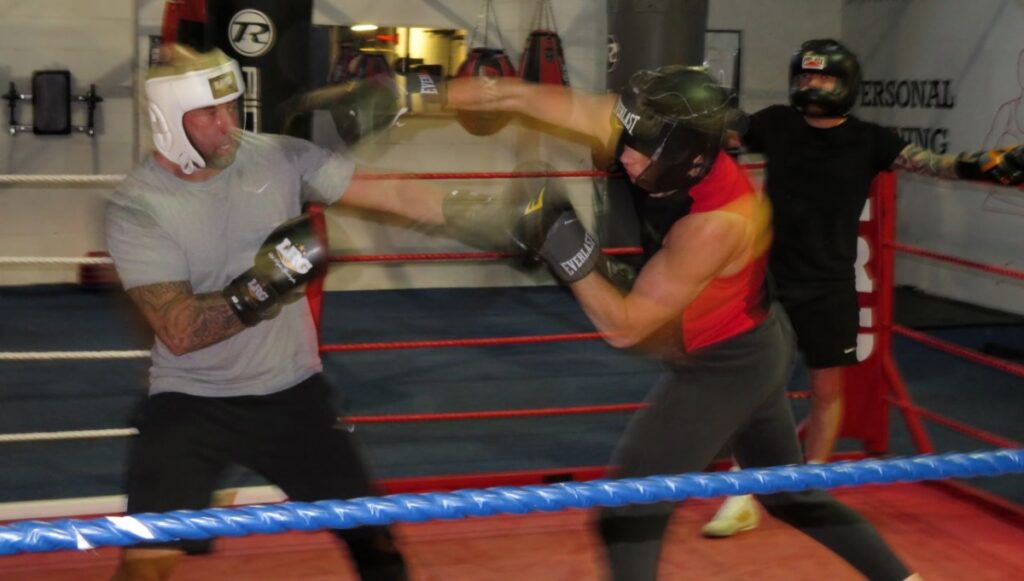
…Or you could set up a knockout combination.
That’s what arguably is the most effective way to knock your opponents out.
Probably you are thinking: why is it so?
The reasons are simple—while you throw a combination:
- You distract your opponent
- You increase the chances that he/she will not see the final, fatal blow
- You increase the chances of him/her opening himself/herself up
- You can use it to trick him/her
- You can use your body to your advantage and his body to his/her disadvantage
A knockout in boxing mainly comes from throwing and landing a punch that your opponent don’t see it coming. The reason is because your opponent isn’t able to brace for the impact.
This is why boxing combinations are ideal for this—it allows you to set up the shots to land that one punch into your opponent that will put his or her lights out.
To illustrate how combos can knock out your opponent, I’ll show you a great example of Arturo Gatti (one of boxing’s all-time greats) using a three-punch combination to knockout Joey Gamache. Right uppercut, left hook, right hook, and goodnight.
Boxing Nomenclature
But before we start…
You need to know some boxing nomenclature. We’re going to assume you’re fighting from an orthodox stance. So, if you’re fighting in southpaw, you just have to switch left hook to right hook, left uppercut to right uppercut, and vice versa. Here’s the punches and their corresponding numbers:
- Jab
- Cross
- Left Hook
- Right Hook
- Left Uppercut
- Right Uppercut
*: To the body
Here are two simple examples (assuming you’re an orthodox fighter):
- 1, 2, 6: Jab, Cross, Right Uppercut
- 1, 2*, 5, Right Step, 3: Jab, Cross to body, Left Uppercut, step to the right, Left Hook
The 15 knockout boxing combinations are summarized as follows:
- Jab, Jab, Cross (1, 1, 2)
- Jab, Slip to Left, Left Uppercut to Body (1, left slip, 5*)
- Slip to Right, Cross (right slip, 2)
- Jab, Cross, Jab, Cross, Jab, Cross, Step to Right, Cross (1, 2, 1, 2, 1, 2, right step, 2)
- Cross, Left Hook, Cross (2, 3, 2)
- Left Hook to Body, Right Hook to Body, Left Hook, Right Hook (3*, 4*, 3, 4)
- Jab, Right Uppercut, Left Uppercut (1, 6, 5)
- Right Uppercut, Step to Right, Cross, Left Hook (6, right step, 2, 3)
- Cross to Body, Jab, Right Hook to Body, Left Hook to Body (2*, 1, 4*, 3*)
- Right Uppercut, Left Hook, Step to Right, Cross (6, 3, right step, 2)
- Feint Cross, Left Hook (feint 2, 3)
- Jab, Cross, Left Uppercut, Cross (1, 2, 5, 2)
- Jab, Jab to Body, Jab, Right Hook (1, 1*, 1, 4)
- Right Uppercut, Left Uppercut, Left Hook, Step to Left, Right Hook (6, 5, 3, left step, 4)
- Overhand Right, Left Uppercut (overhand right, 5)
#1: Jab, Jab, Cross (1, 1, 2)
Difficulty: Beginner
One of the most simple, yet deadly knockout combos. It’s a very versatile boxing combo.

I must particularly emphasize about a misconception a beginner often has: you don’t receive a medal for looking good while boxing, but rather you get one for fighting good and winning.
Sometimes, people want to throw some crazy 8-punch combos and overcommit, but in most cases, simplicity is the best!
There are several ways you can throw these knock out punches:
- You throw two quick jabs and finish with a cross
- You throw a jab and follow up separately with a jab-cross
- Touch the opponent with jabs to distract him and finish with a powerful right hand
The most important part of the combination here is the cross, which is the punch that knocks your opponent out cold. In this case, the jabs serve as a way to distract your opponent and open him/her up, so you can finish the opponent with a strong, explosive cross.
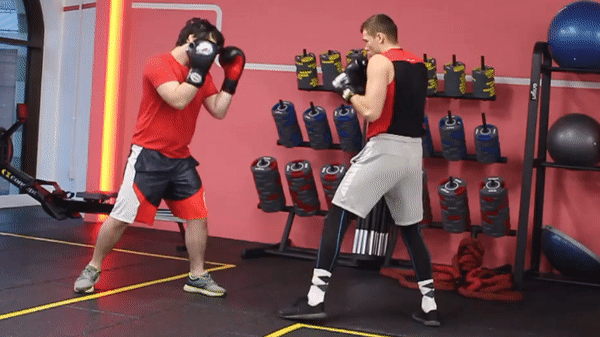
This is an offensive combination.
You throw this combo while moving forward! Of course, it can also be used on the back foot, but it is most effective while moving towards your opponent.
Here’s a video of Deontay Wilder knocking out Luiz Ortiz with a variation of this combination. Notice how Wilder first threw several isolated soft jabs to distract Ortiz before throwing a devastating cross to end the bout.
#2: Jab, Slip to Left, Left Uppercut to Body (1, left slip, 5*)
Difficulty: Beginner
A very effective, simple, and painful combination if you can land it.
The left uppercut here can be either to the head or body and is the most important punch in this combination.
If you decide to aim the uppercut to the liver and land it correctly, then believe me, there is no way your opponent is getting up from that. This combination is aimed at knocking your opponent out through a body shot—particularly to the liver.
Again, we start this combination with a jab—preferably a short jab, as you do not want to be too far from your opponent when you throw it since you’ll follow up with a body shot.
After the jab, you slip to your left; this is to not get hit and to gain extra power from the angle and leverage.
After the slip, you throw a powerful left uppercut to the body. An absolute killer.

This combination works both well on the front foot and the back foot. You can easily set it up yourself or use it when your opponent charges at you to take advantage of the opponent’s momentum.
Picture perfect example of the combination can be seen executed here in Whyte vs. Povetkin. Jab, slip to the left, and a left uppercut to the head. Povetkin caught Whyte ideally, with Whyte being knocked out cold even before hitting the ground.
#3: Slip to Right, Cross (right slip, 2)
Difficulty: Beginner
Again, simplicity is key.
A very effective way to knock somebody out. It works well against people who lean in too much or constantly throw the jab. If you fight with an opponent who uses the jab to establish range, then this is the perfect combination for you to counter with.
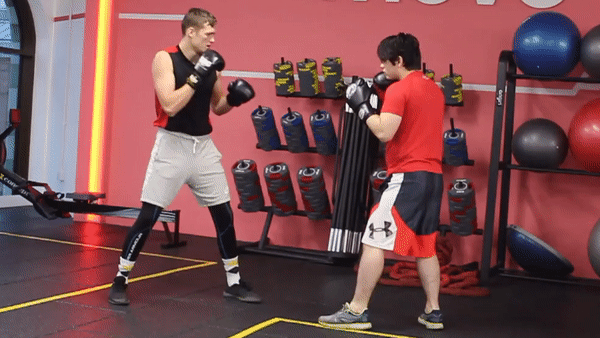
When your opponent throws his jab at you, slip to your right (let his jab pass you), and throw a very powerful cross to the head.
Using this combination not only creates an angle and opening for yourself, but also catch him while he is coming in—absolutely a brutal mix.
As a real life example, Floyd Mayweather was a master of this combination, where he damaged guys throughout his entire career with it.
Very simple, very effective, and very safe, as you do not overcommit and do not give many chances for your opponent to counter you. The key here is timing, as you need to land the punch at an ideal moment, but when you do, it’s a goodnight-sleep-tight for him.
The combination can be seen in the Inoue vs. Moloney fight. A perfect counter cross from Inoue that put Moloney to sleep.
#4: Jab, Cross, Jab, Cross, Jab, Cross, Step to Right, Cross (1, 2, 1, 2, 1, 2, right step, 2)
Difficulty: Intermediate
Less simple and probably bit more confusing, but very effective.
The point of this combination is to get the opponent used to a regular jab-cross and then at the end, surprise him with a big cross thrown from a different angle.
You don’t throw the jab-crosses all in one go, but instead throw the pairs in isolation as part of a setup before throwing that big cross.
The combination starts with a simple jab-cross. After the 1,2 you set up and throw another jab-cross. The first two 1,2’s were thrown to get your opponent used to getting the jab-cross.
After the first four punches, you throw the last four-punch combination—another jab-cross but this time immediately followed by a step to your right and a massive right cross loaded up and thrown from a new angle.

Your opponent whose head got used to the 1,2 is very likely not prepared for the sudden cross thrown from a new angle. A very good trap.
#5: Cross, Left Hook, Cross (2, 3, 2)
Difficulty: Beginner
Nothing really surprising or inventive from us here.
One of the old, well-known knockout combos still effectively used by many punchers. The point of this combination is to throw three strong punches successively coming from different angles.
We start with a stiff, strong cross. Our body’s positioning after the cross then allows us to throw a strong left hook and then again finish with the cross.

You should aim to land one or two of those punches, but even if it’s only the last cross that lands, you will still do significant damage. If however, you land the hook and the crosses, then it’s lights out for the opponent.
One of history’s greatest and most important knockout was achieved using this combo—Muhammad Ali vs. George Foreman. As I mentioned earlier and proven here, is that when throwing this combination, even if only one or two of the punches land, you will still have a great chance for a spectacular knockout.
#6: Left Hook to Body, Right Hook to Body, Left Hook, Right Hook (3*, 4*, 3, 4)
Difficulty: Intermediate
Mike Tyson type combination.
Very effective and one that will do a lot of damage when performed correctly.
The key here for throwing these knockout punches is to be at the correct distance. You must be close to your opponent—preferably have him in the corner or on the ropes—then, the combo will be doing the most damage.
Very important part of this combination is also to throw the punches in one go, as if you’re throwing all of them simultaneously. It cannot be two hooks to the body, a brief break, and then two hooks to the head. It must be all thrown at once, with a lightning-fast change of levels.

The point of attacking first the body and then the head, is to force your opponent to get his/her hands down to protect his/her body which will leave the head exposed. If you manage to do it fast enough, you will land punches to his/her head before he/she can raise them back.
If you land both punches to the head, then it’s a clean, cold knockout.
For actual demonstration of the knockout combo, I’ve included a video of Chisora vs. Szpilka. Notice how before the KO, Chisora first throws explosive hooks to the body before going to the head.
#7: Jab, Right Uppercut, Left Uppercut (1, 6, 5)
Difficulty: Beginner
Another of these simple knockout combos.
Like in many other knockout combos, the jab here serves to distract your opponent. This will then allow you to set up your knock out punches.
In this combination, you start by throwing the quick jab to the head.
Often while people defend against the jab, they have their elbows wide-open, which leaves a place for you to exploit.
Take advantage of this to quickly land a powerful right uppercut and followed by a left uppercut. This should put your opponent to sleep if both are thrown accurately.

Useful combination, although I advise you to throw them in the later rounds of the fight. That’s because throwing two uppercuts does leave you exposed. So, it’s a good combination for a tired opponent who’s less likely to counter-punch you.
#8: Right Uppercut, Step to Right, Cross, Left Hook (6, right step, 2, 3)
Difficulty: Intermediate
Definitely not one of the easiest knockout combos and not something to do when you’re a beginner. This combo demands good footwork and coordination.
Aim of this combination is to throw a punch at different angles to confuse and knock out your opponent.
We start the combo with a fast and tight right uppercut to the chin.
Right after the right uppercut which forces our opponent to tuck in his elbows, we step to the side and throw a cross to the head from a new angle.
After the cross, we finish the combo off with a left hook that’s intended to put the opponent off-balance and to the ground.

The movement while throwing the combination is difficult, although when done correctly, it can really mess the opponent up. This type of combination is often visible in Lomachenko’s fights. Due to Loma’s superior footwork, he can allow himself to quickly step and move to finish his opponents.
Again, not the easiest to perform for beginners. But practice makes perfect—take that to heart when you’re training this combo on the pads!
#9: Cross to Body, Jab, Right Hook to Body, Left Hook to Body (2*, 1, 4*, 3*)
Difficulty: Intermediate
This combination is a bit more difficult since you’ll have to use footwork to close the distance, but it’s very effective when you’re trying to close-in the gap.
We start by throwing a cross to the body.
Remember! While throwing this punch, you need to lower your entire body level and not just your hands! This is a classical mistake that leaves you exposed and open to a devastating counter-punch.
After the cross to the body that aims to hurt your opponent’s core and lower his hands down, we throw a quick jab to the head.
What follows after the cross are two powerful body punches—right hook and left hook thrown in quick succession.
When trying out this combination, it is important to throw the first two punches very quickly, as their aim is to confuse the opponent. That is, it’s designed to keep your opponent guessing whether the next punch will be to the body or the head.
While your opponent is preoccupied with anticipating your next moves, use that time to cut the distance and finish him off with two massive hooks to the body.

Your intention is to land the last two punches, where their role is to knock the opponent out, while the first two punches are used as a set up. If you land them, that’s great but concentrate on landing the two hooks.
#10: Right Uppercut, Left Hook, Step to Right, Cross (6, 3, right step, 2)
Difficulty: Intermediate
Intermediate-level stuff.
This combination is typically performed on the back foot when you’re going away from your opponent’s attacks. When you fight an aggressive opponent that comes in with a jab or with big punches, then it’s a good combo to use.
The point of this combination is to catch him with the right uppercut when he comes in.
Right after an uppercut, we throw a left hook and then step to your right out of your opponent’s line of fire.
You will then throw a strong cross to the jaw from the new angle.

If done quickly, your opponent will be in a position in which he either gets knocked out cold or knocked down because of being off-balanced.
The combo works best against very aggressive opponents, who tends not to look but simply throw wild punches. The key aspect of this combination is to have the right timing, especially while throwing the first right uppercut.
#11: Fake Cross, Left Hook (feint 2, 3)
Difficulty: Intermediate
An effective combo for opponents who move around a lot, especially those who seem to be dancing around the ring instead of going back and forward.
The combination is first set up by a faint.
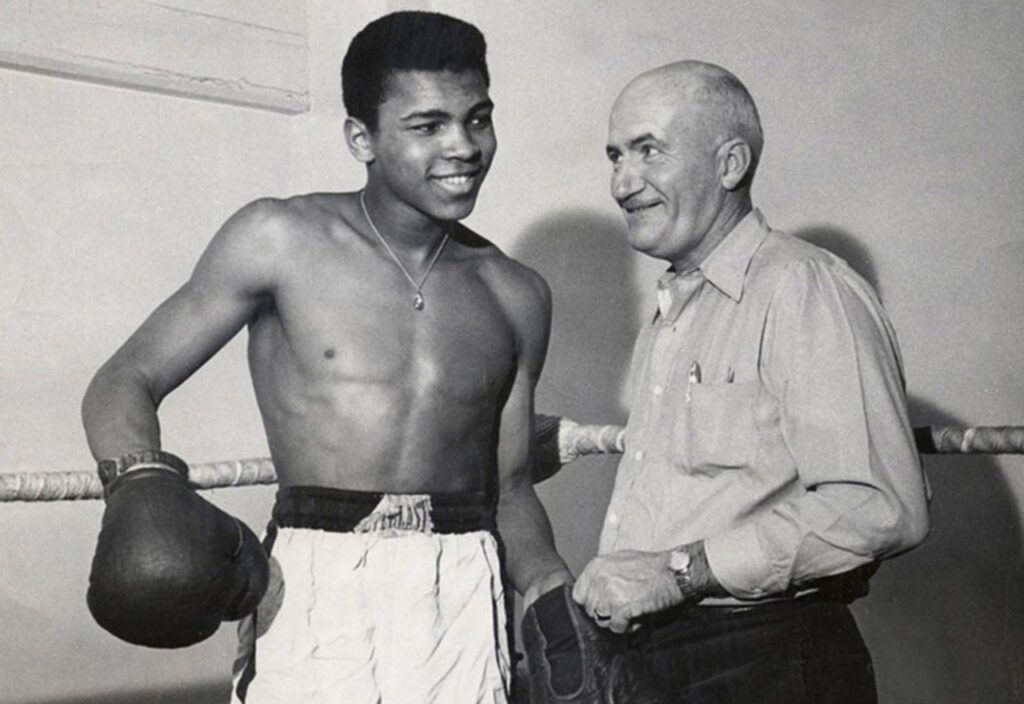
When you have an opponent that keeps moving around you, especially to your left, what you can do is to feint a cross. What that usually does to your opponent is force him even more to move and slip to your left to evade the danger.
After he moves to the left, you throw a gazelle left hook to the head—that is, a left hook combined with an explosive jump to close in the distance.
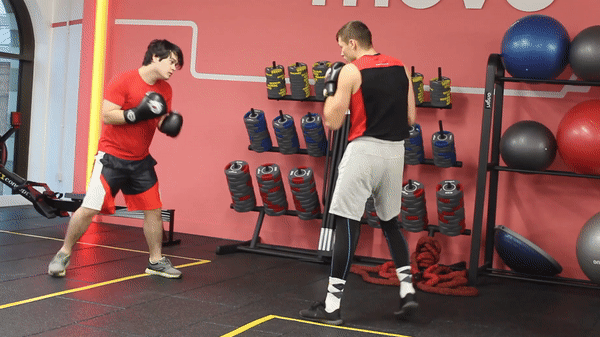
If you can catch him/her with it, it’s likely game over for the opponent as the momentum from the opponent moving towards the punch will amplify the strength of your punch.
It’s particularly important to note that speed and timing are vital here to make it work.
#12: Jab, Cross, Left Uppercut, Cross (1, 2, 5, 2)
Difficulty: Beginner
Another of these standard knockout combos that you likely have done on the focus mitts, but nevertheless an effective knockout combination you can use right away regardless of your boxing skills.
The combo starts with a strong, standard jab-cross to encourage the opponent to cover up.
After the cross, you throw a left uppercut. This will force the opponent to lower his/her hands and so you follow up with a cross to the head.
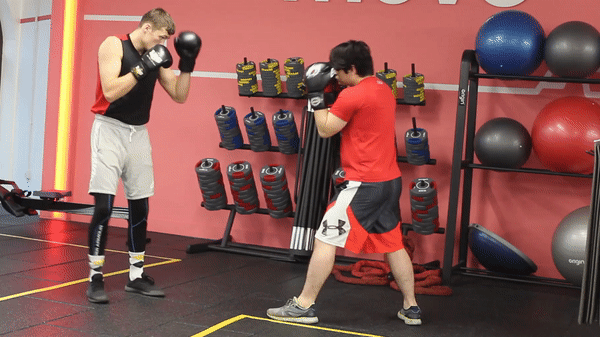
To knockout someone with this combination, you have to be accurate and quick with your punches. Preferably, you want to land those punches to the face or the chin and avoid the forehead.
This is because the forehead is the thickest part of your skull and can break your hands. No wonder why a headbutt is deadly!
#13: Jab, Jab to Body, Jab, Right Hook (1, 1*, 1, 4)
Difficulty: Beginner
This is one of the many other knockout combos that makes use of jabs as a set up to land a knockout punch at the end.
First, you start the combination with three quick jabs thrown in the following sequence—jab to the head, jab to the body, and then jab to the head. By throwing these, you take your opponent’s attention and focus away.
After the third jab, you finish the opponent with a strong right hook to the head. This would come unexpectedly to the opponent, as he/she would have incorrectly anticipated more jabs.
When you attack with jabs, you often make your opponents cover the front of their face and so exposing the side of their faces. That opening then allows you to land a powerful right hook to put your opponent to sleep.

One important note when using this combination—make sure when you throw the second jab to the body, you dip your whole body down. That ensures you don’t get countered when throwing those jabs.
#14: Right Uppercut, Left Uppercut, Left Hook, Step to Left, Right Hook (6, 5, 3, left step, 4)
Difficulty: Intermediate
One of the more advanced and complicated knockout combos that makes use of Mike Tyson style of stepping.
The combination works wonders when you start it at the short/clinch range.
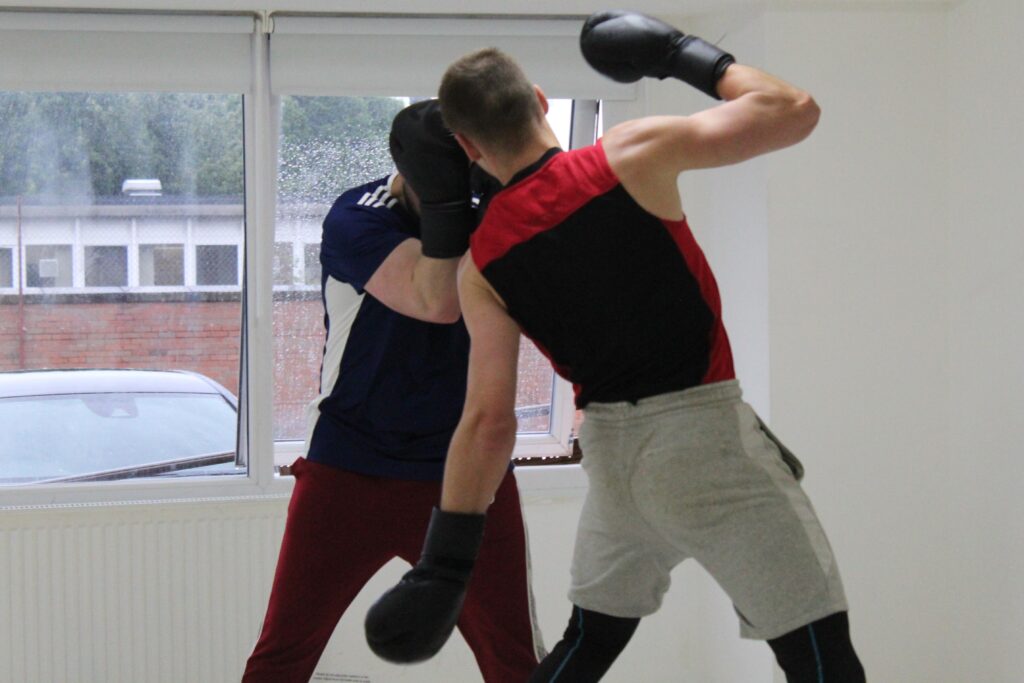
You start the combo by throwing tight left and right uppercuts, then followed up by a strong, explosive left hook. The opponent will likely be facing down and covering up to block those punches.
You will then use this to your advantage to swiftly step to your left and turn as seen in our demonstration of the combination.
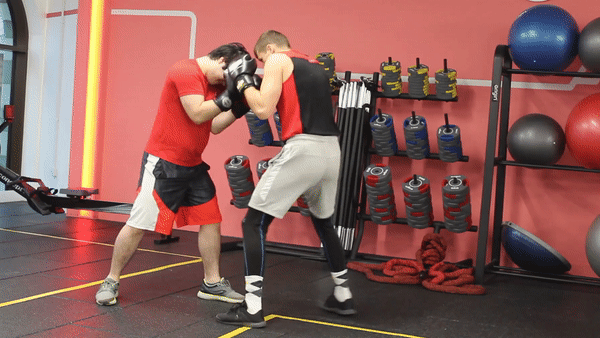
Finally, you land a powerful right hook coming from a new angle that your opponent will not see it coming. If you can land it accurately to the chin, then believe me, he/she won’t come back up from that!
#15: Overhand Right, Left Uppercut (overhand right, 5)
Difficulty: Intermediate
This is a tricky one.
It’s an effective, but risky counter combination because you can potentially get countered.
Here’s how to throw these knock out punches. First, when you realize that your opponent will throw a jab, throw the overhand right from above at the same time.
You then follow up the shot with a powerful left uppercut to the chin. You’ll likely knockout the opponent while he/she is still standing even if you land just one of the shots.
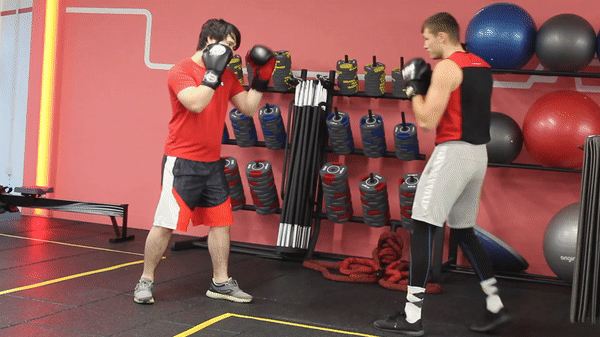
Landing this combination can be tricky for two reasons.
First, your overhand right can be easily slipped to the opponent’s outside and exposing you to shots to the body and the chin. Therefore, you have to make sure the opponent will throw a lazy jab by observing his/her throwing patterns.
Another reason of its difficulty is the timing. The timing is vital for this combination, because if you throw it too early you’ll be throwing a wild shot that’s ripe for being counter punched and if you throw it too late your opponent will dodge it and open you to being knocked out.
As a demonstration of the timing, see Marquez knocking out Pacquiao in Pacquiao vs. Marquez IV. Notice how Marquez anticipated the jab and threw the overhand right exactly when Pacquiao threw a jab.
Wrapping It Up
These knockout combos can really be lethal and more dangerous than one punch.
When executed with perfect timing, speed, and power, they will provide you a knockout win.
Most importantly, everyone needs to remember that if you want to be good at throwing solid knockout combos, it’s not all about knowing how to throw it.
Boxing is a muscle memory sport, so to throw a good combo you need to do it thousands of times before your hands, hips, and legs will fully remember it. When the combo is uploaded into your permanent boxing hard-drive, then you’re a real threat.
Enjoyed Our Content?
Let us know which these knockout combos are your favorite! If you have any videos of your knockouts that were set up by a combination—send it to us via our contact form. If you have any questions, shoot them away!
Happy training!